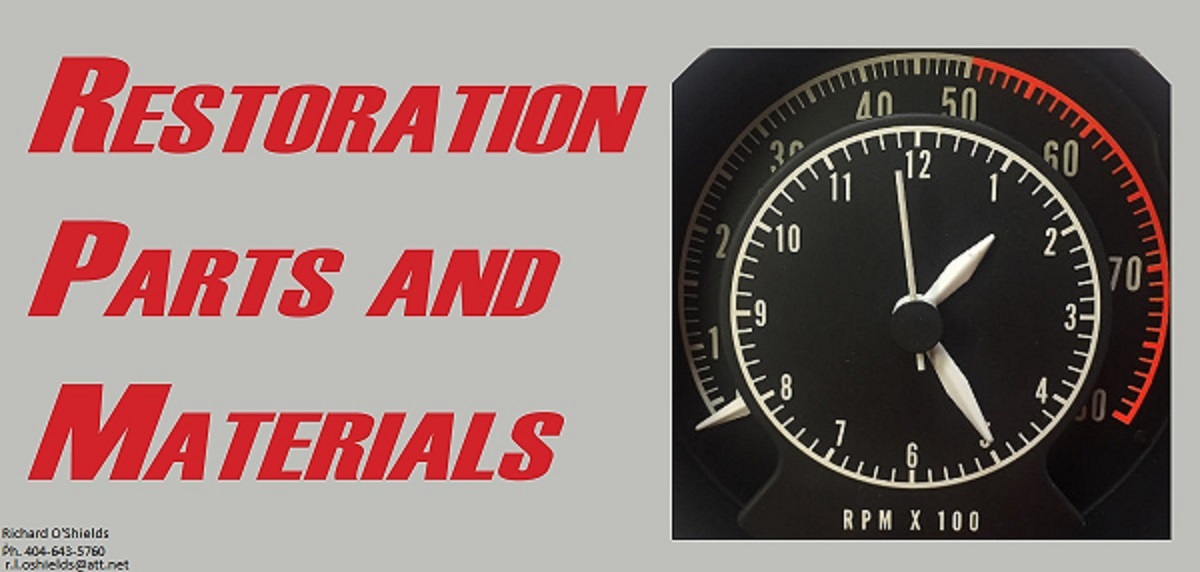I have a 70 Barracuda that came from the east coast. For the most part the body does not have a lot of rust. I don't know why but they painted over the rust instead of prepping and then painting the car. Can the rust spots be repaired? Or would it be worth it to replace the fender. I know original is better, when possible. The passenger door has some rust at the bottom front edge. The frame has also been patched. Thanks


You are using an out of date browser. It may not display this or other websites correctly.
You should upgrade or use an alternative browser.
You should upgrade or use an alternative browser.
Rust Repair
- Thread starter money pit
- Start date
1972 AAR Cuda
Well-Known Member
If thats the only rust, I would fix it. Original is always better in my mind, but there are limits. A relatively flat spot like this should be repairable, but where there is visible rust there will be more hidden in my experience.
I think your are right. a lot of the body and floors have been replaced. The frame has some patches and needs additional work. Original fenders are hard to come by. I saw a pair of AAR fiberglass fenders for sale. Do you know if the AAR had fiberglass fenders? I have an AAR clone. There's evidence it was probably raced (old roll bar mounts and it has a drive shaft loop). ThanksIf thats the only rust, I would fix it. Original is always better in my mind, but there are limits. A relatively flat spot like this should be repairable, but where there is visible rust there will be more hidden in my experience.
1972 AAR Cuda
Well-Known Member
The AAR had a fiberglass hood, but never came with fiberglass fenders...
That's what I thought. ThanksThe AAR had a fiberglass hood, but never came with fiberglass fenders...
Xcudame
Well-Known Member
No more rust than you have, I'd sand it out and use JB-Weld. AAR Cuda and T/A Challengers did have unique fenders! I know for sure (from this website!) the Challenger T/As had unique fenders. Standard fenders were slightly narrower, R/T (15" wheels) were widest with the Challenger T/A in the middle. The wider fenders can be easily checked because you can fit your hand between the outer sheet metal and the headlight bucket area.
torredcuda
Well-Known Member
Whatever the amount of rust you see multiply by 10 for what you probably really have, once you start digging you will go down the rabbit hole - sandblast, cut out, weld etc.
540HemiCuda
Well-Known Member
I agree. Rust is cancer. And yes, it will also be far away from where you see it. There is no repairing it. Even sand blasting will not stop it. The ONLY way to deal with it is to cut it out. ANYTHING you coat it with will only trap any moisture that does get behind it from another direction.
Challenger RTA
Well-Known Member
I could not agree more.If thats the only rust, I would fix it.
That being the area of the front splash shield area. I would use a 16GA meatal. Clean, grind, cut the area then fab a piece to fit (make templet). Then if you don't have the skill to weld or tig. Minimize distortion. Find someone. Prep work takes most work.
Here again. I could not agree more. It's an a mission of look and see. But I probably would still fix.Whatever the amount of rust you see multiply by 10
Treat with SEM Rust Mort or other. Save yourself some time and grief. Get a gallon.Even sand blasting will not stop it.
Last edited:
moparleo
Well-Known Member
- Joined
- Oct 17, 2011
- Messages
- 7,256
- Reaction score
- 2,044
Try to repair but prepare to replace. Cancer has only one sure cure, radical removal. Rust will hide where you can't see it.
This is a clone ?
Replace the metal . Save your money and time for more detailed needs.
This is a clone ?
Replace the metal . Save your money and time for more detailed needs.
I agree. That's what I'm worried about. I bought the car because Barracudas don't come up for sale very often.Whatever the amount of rust you see multiply by 10 for what you probably really have, once you start digging you will go down the rabbit hole - sandblast, cut out, weld etc.
Thanks, There looks like there have been a number of patches. I plan on making some repairs on the frame. I have a welder so I may tack in in place and get it professionally welded. I think for time sake, I may replace the fender. I live in Southern Calif. will undercoating it , retain moisture? I don't drive in the rain and there is no snow.I could not agree more.
That being the area of the front splash shield area. I would use a 16GA meatal. Clean, grind, cut the area then fab a piece to fit (make templet). Then if you don't have the skill to weld or tig. Minimize distortion. Find someone. Prep work takes most work.
Here again. I could not agree more. It's an a mission of look and see. But I probably would still fix.
Treat with SEM Rust Mort or other. Save yourself some time and grief. Get a gallon. View attachment 143877
That's the plan. ThanksTry to repair but prepare to replace. Cancer has only one sure cure, radical removal. Rust will hide where you can't see it.
This is a clone ?
Replace the metal . Save your money and time for more detailed needs.
540HemiCuda
Well-Known Member
Yes. Just think; should any moisture get behind the undercoating from any direction, how can it dry? It cant'. It is trapped. And moisture will get behind the undercoating. There just isn't any way to totally seal the bottom of the car. The only places where undercoating should be used is in the wheel well areas to prevent rock chips. But the same situation exists there, it simply is the lesser of two evils. Without some chip protection, the wheel wells would look like they had been sand blasted in short order. Plus the dents in the tops of the fenders from rocks being thrown up at hi way speed. I have seen it several times. Once even on my current Cuda. So under coat the fender wells like the factory did and for the same reason(s).Thanks, There looks like there have been a number of patches. I plan on making some repairs on the frame. I have a welder so I may tack in in place and get it professionally welded. I think for time sake, I may replace the fender. I live in Southern Calif. will undercoating it , retain moisture? I don't drive in the rain and there is no snow.
Xcudame
Well-Known Member
Remember that rust is iron oxide. You need oxygen (which water has) to turn steel back into iron oxide. Chemical conversion of the iron oxide like Rust-Mort does work! Once treated and the metal is changed, it can be primed and painted (which seals out oxygen) and will no longer oxidize/rust.
CFL
Member
I've got a similar challenge with surface rust on the rear floor pans of my 71 barracuda convertible and needs some advice. I've grinded and sanded it down but still have some work to do. My plan is to coat the bare metal with a rust inhibitor or rust converter then top coat it with Y8 gold leaf to match the rest of the interior metal. I've also got some surface rust under the hood along the fenders and plan to do the same. What brand rust inhibitor or rust converter paint would you recommend for the base coat on these areas.







pschlosser
Well-Known Member
There are many phosphoric acid-based products on the market. These are the "rust removing/metal etch" products, such as Navel Jelly (old school) and many other products with the same active ingredients. Wire brushing is sometimes necessary. Once removed, two-part epoxy primers are excellent in sealing the bare metal.
That said, if you're more of a hardware store/spray can/rustoleum type of guy (no shame in that) the result will last for many years if you keep the car garaged.
Your rusty areas look pretty mild, and I would feel pretty good about that. An acid product is going to eat into some of the existing paint, so you may want to factor in how much repainting you're planning to do.
Since I have worked with several acid products over the years, that is the direction I would go for my car(s) since I find that pretty known. A mild citric acid solution would do well, too.
Another product I've used many times ($60/gallon) is POR-15 Metal Prep. I like this product because it includes Zinc Phosphate in the formula. After treatment and rinsing, is leaves behind a whiteish (and paintable) zinc coating that inhibits new (surface) rust for many months. I like that, because I can take my time treating the rust, and paint it all at the same time.
That said, if you take your time removing the scaly, crumbly rust, the exposed bare metal may surface rust as you work through the project. But that new rust is very light duty, and a final acid treatment right before paint, is all that is needed to get it bare and ready, again.
Spray rustoleum (rust convertor) products contain a rust dissolver and epoxy primer in one product. While such products may not be textbook perfect and may not hold up well to snow, and salty water, that won't be an issue for many who do not drive in the rain or in snowy climates.
edit: for stuff that isn't a show car, like reddish rusty areas on a motorcycle or japanese scooter, I may treat with POR-15 and just leave it that way, unpainted (like it may have been before) and that white coating ages in time, and it leaves behind a metal with a nice patina.
That said, if you're more of a hardware store/spray can/rustoleum type of guy (no shame in that) the result will last for many years if you keep the car garaged.
Your rusty areas look pretty mild, and I would feel pretty good about that. An acid product is going to eat into some of the existing paint, so you may want to factor in how much repainting you're planning to do.
Since I have worked with several acid products over the years, that is the direction I would go for my car(s) since I find that pretty known. A mild citric acid solution would do well, too.
Another product I've used many times ($60/gallon) is POR-15 Metal Prep. I like this product because it includes Zinc Phosphate in the formula. After treatment and rinsing, is leaves behind a whiteish (and paintable) zinc coating that inhibits new (surface) rust for many months. I like that, because I can take my time treating the rust, and paint it all at the same time.
That said, if you take your time removing the scaly, crumbly rust, the exposed bare metal may surface rust as you work through the project. But that new rust is very light duty, and a final acid treatment right before paint, is all that is needed to get it bare and ready, again.
Spray rustoleum (rust convertor) products contain a rust dissolver and epoxy primer in one product. While such products may not be textbook perfect and may not hold up well to snow, and salty water, that won't be an issue for many who do not drive in the rain or in snowy climates.
edit: for stuff that isn't a show car, like reddish rusty areas on a motorcycle or japanese scooter, I may treat with POR-15 and just leave it that way, unpainted (like it may have been before) and that white coating ages in time, and it leaves behind a metal with a nice patina.
Last edited:
CFL
Member
Thanks, we are thinking along the same line. I've heard of POR-15 and Rust Bullet but have no experience so your insight is much appreciated. I've grinded all the flakes and heavier rust already so what the pics show is what has come back in the 2 months I took a break from the project and it will come off pretty easily. If I understand you correctly these rust inhibitors/convertors seal the metal so I dont need an additional sealer before I put on the color coat. is that right?
Deathproofcuda
Well-Known Member
I would use Ospho for that. A quart bottle is less than $20 at the local hardware store and should be more than enough for your floor boards engine compartment.
Skyco 1 qt Ospho Surface Prep Mfr# QUART - Ace Hardware
Skyco 1 qt Ospho Surface Prep Mfr# QUART - Ace Hardware
Challenger RTA
Well-Known Member
Came across this a while back.
Rust converter
If you use a rust converter use Enrust you must allow it to cure for twenty four hours and then coat it with a good primer and top coat. If you don't do that it won't work well. and no coating is perfect. In my applications -marine preservation of metal hulls a good paint job will last 3 (if done in a so-so fashion) to 9 months or so (if done nearly perfectly) and nothing will protect you from chipping or impact.. The acid based products are really only useful for eliminating running rust especially on painted surfaces. I hasten to add that no coating is designed to be bent.
A rust converter made by Rust Check. It's a phosphoric acid formula with the consistency of water that can be brushed or sprayed. It does convert iron oxide (rust) to ferric phosphate. Once converted the actual ferric phosphate does not rust...it's chemically impossible. Re-rusting occurs when the product fails to convert all the rust and rust is left behind. Re-rusting also occurs when barriers are breached allowing moisture and oxygen to reach the virgin metal under the ferric phosphate, so it's the virgin metal rusting this time. When a rust converter is applied to rust, the converter must remain wet for a period of time to allow the formula to soak into the rust all the way to the bare virgin metal. Applying a rust converter just as a film on top of rust has little or no value. Start by removing as much visible rust as humanly possible or reasonable by grinding, wire wheels, sanding or your preferred method. Apply the first coat of rust converter as an indicator tool. When it converts and turns the remaining rust black and it's now more visible, now it's time to sand, grind and remove as much of the black converted ferric phosphate as possible. For auto body panel repair, use a Dremel tool with a precision grinding bit to attack as many remaining black specs that you can, like the dentist does a root canal with his drills. Now you should have shinny metal with very minor black specks remaining. Now apply 2 coats of rust converter, again keeping it wet to penetrate into the pits of the metal. Allow the final coat of rust converter to dry for a minimum of 24 hours before applying a quality rust inhibiting alkyd paint with 2 coats. It's tedious work and you may need to be OCD to endure it. I have autobody and frame repairs/conversions that are in excess of 12 years old, with no signs of failure. Auto rust IS automotive cancer and must be treated the same way. Surgically cut out everything possible and treat what you may have missed with chemotherapy. Phosphoric acid.
Rust converter
If you use a rust converter use Enrust you must allow it to cure for twenty four hours and then coat it with a good primer and top coat. If you don't do that it won't work well. and no coating is perfect. In my applications -marine preservation of metal hulls a good paint job will last 3 (if done in a so-so fashion) to 9 months or so (if done nearly perfectly) and nothing will protect you from chipping or impact.. The acid based products are really only useful for eliminating running rust especially on painted surfaces. I hasten to add that no coating is designed to be bent.
A rust converter made by Rust Check. It's a phosphoric acid formula with the consistency of water that can be brushed or sprayed. It does convert iron oxide (rust) to ferric phosphate. Once converted the actual ferric phosphate does not rust...it's chemically impossible. Re-rusting occurs when the product fails to convert all the rust and rust is left behind. Re-rusting also occurs when barriers are breached allowing moisture and oxygen to reach the virgin metal under the ferric phosphate, so it's the virgin metal rusting this time. When a rust converter is applied to rust, the converter must remain wet for a period of time to allow the formula to soak into the rust all the way to the bare virgin metal. Applying a rust converter just as a film on top of rust has little or no value. Start by removing as much visible rust as humanly possible or reasonable by grinding, wire wheels, sanding or your preferred method. Apply the first coat of rust converter as an indicator tool. When it converts and turns the remaining rust black and it's now more visible, now it's time to sand, grind and remove as much of the black converted ferric phosphate as possible. For auto body panel repair, use a Dremel tool with a precision grinding bit to attack as many remaining black specs that you can, like the dentist does a root canal with his drills. Now you should have shinny metal with very minor black specks remaining. Now apply 2 coats of rust converter, again keeping it wet to penetrate into the pits of the metal. Allow the final coat of rust converter to dry for a minimum of 24 hours before applying a quality rust inhibiting alkyd paint with 2 coats. It's tedious work and you may need to be OCD to endure it. I have autobody and frame repairs/conversions that are in excess of 12 years old, with no signs of failure. Auto rust IS automotive cancer and must be treated the same way. Surgically cut out everything possible and treat what you may have missed with chemotherapy. Phosphoric acid.
Similar threads
- Replies
- 0
- Views
- 2K


















